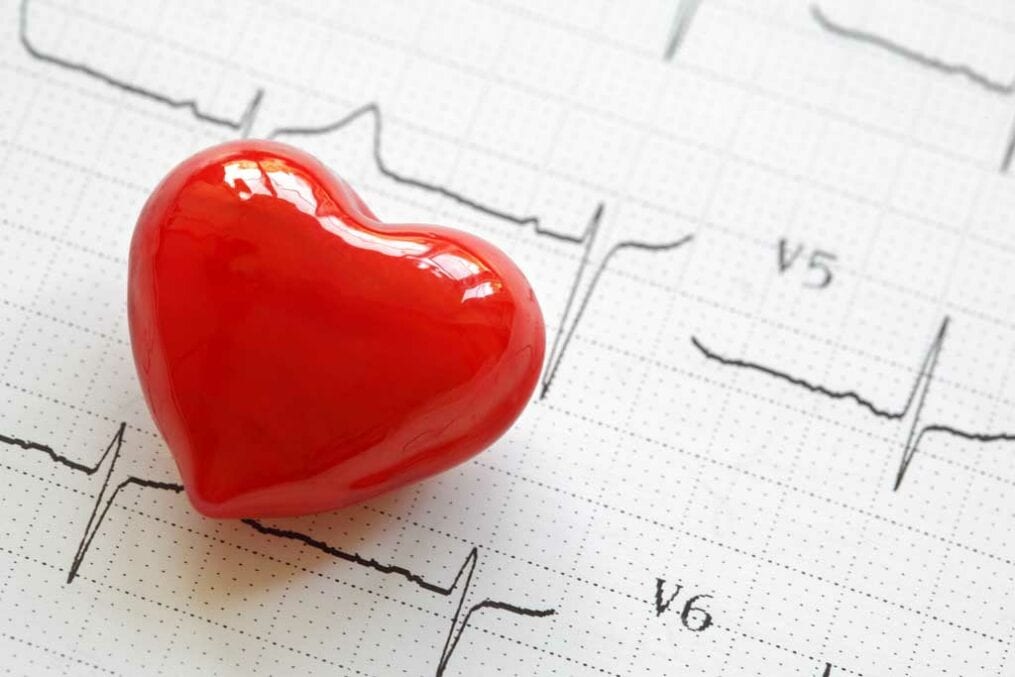
There’s no doubt that when it comes to our cholesterol levels, as a nation we could do better. Around two-thirds of British women have too much cholesterol in their blood. But, in fact, cholesterol isn’t, in itself, a bad thing. This versatile waxy substance is used by our bodies to make vital hormones such as oestrogen, testosterone and cortisol, and, when the sun shines on your skin, is converted to make vitamin D. Cholesterol is also used to make bile and it is a vital structural component of every cell in our body.
We can only get a fifth of the cholesterol we need ready-made from the food that we eat. Most of it is manufactured in the liver from ordinary fats in our food. These fats are packed into globules called lipoproteins, which act like delivery vans, carrying the cholesterol around the bloodstream to where it’s needed.
There are two main types of lipoproteins that carry cholesterol. LDL – or low density lipoproteins – are labelled the ‘bad’ type, as they can stick to the walls of arteries and deposit cholesterol, causing blockages. It’s better to have low levels of LDL and more of the ‘good’ kind called HDL, or high density lipoproteins. HDL mops up excess cholesterol deposits to be returned to the liver for recycling. The liver only makes enough new cholesterol every night to replace what you’ve used that day, keeping your blood cholesterol at a healthy level.
Out of balance
The problem occurs when there is too much LDL cholesterol in the blood, due to either overproduction or slow removal, and this cholesterol will then stick to the blood vessel lining. If this is allowed to build up over time, arteries can narrow and harden so that blood is unable to get through, leading to a heart attack or stroke.
Sadly, this might be the first indicator that you have a cholesterol problem, as there are usually no symptoms (although some people might get signs such as a white ring in the cornea in the eye). But we know that these factors can cause high cholesterol:
Being a smoker. This makes cholesterol four times more likely to stick to the artery walls.
An unhealthy lifestyle. Diets high in saturated fats accelerate cholesterol production, so it’s a good idea to cut down your mid-afternoon cakes and post-dinner puddings. Being inactive similarly elevates production. These factors go hand-in-hand with being overweight, also a risk factor for high cholesterol, particularly if you are ‘apple shaped’ and carry weight around your middle. Having this shape is associated with your body producing less protective HDL.
Your age. The older you are, the less efficient your body’s cholesterol cleaning and recycling system is. People between the age of 40 and 75 should get a test.
If you have a family history of heart attacks and stroke. Familial hypercholesterolaemia (FH) means you’ve inherited a faulty gene for LDL removal, so your body is less efficient at recycling cholesterol. If untreated, people with FH can die from a heart attack before the age of 50, so it’s vital to get diagnosed. If a first-degree relative (parent or sibling) has been diagnosed with FH, you should get tested. There are several other forms of inherited high cholesterol. If a close relative has had a heart attack at a young age (below 55 for men and 65 for women), that also means you should get checked.
Going through menopause. Although men have higher levels of cholesterol than women in their younger years, this changes after the menopause when women experience a sharp increase in LDL cholesterol. This may be because less cholesterol is needed to make reproductive hormones like oestrogen.
Your medical history. High blood sugar levels in diabetes make LDL cholesterol stickier and more likely to clog up arteries. Raised blood pressure seems to roughen up the blood vessel lining, again making LDL stick to it.
Check your cholesterol levels
It’s particularly important to get a test if any of the risk factors above apply to you. This can be done by your GP taking a blood sample. The test will provide you with your:
TOTAL CHOLESTEROL (TC) – the total amount of cholesterol in your blood, which should ideally be under 5mmol/L (millimoles per litre of blood).
HDL CHOLESTEROL (HDL-C) – the amount of ‘good’ cholesterol, which should be over 1mmol/L for men and 1.2mmol for women.
YOUR TC:HDL RATIO – the TC figure divided by HDL-C figure. A ratio below three is ideal, above six is considered high risk and the lower this figure is, the better.
How low can you go?
Cut your cholesterol with these steps:
Give your diet an overhaul. Keeping your saturated fat intake below 20g (women) and 30g (men) is important for lowering cholesterol, so limit foods like butter, fatty meat and sausages, pastries and chocolate and cheese, and cooking methods like frying.
Move more. Being active stimulates your self-cleaning system and increases levels of HDL cholesterol.
Stop smoking. Your arteries will thank you for it.
Consider statins. If you’re at high risk of heart disease, this medication can be prescribed by your GP. Statins slow the liver’s production of cholesterol at times when there’s plenty left over to be recycled, meaning levels in the blood fall. Modern statins can reverse the effects of clogged arteries. In the last 25 years, statins have saved millions of lives and side effects are less common than many think.
Dr Dermot Neely is based at the Royal Victoria Infirmary, Newcastle, where he leads the Newcastle Lipid Clinic. He is also a trustee of Heart UK, the national cholesterol charity.
The post Cholesterol: do you know your number yet? appeared first on Healthy Magazine | Food | Fitness | Beauty | Health.

No comments:
Post a Comment